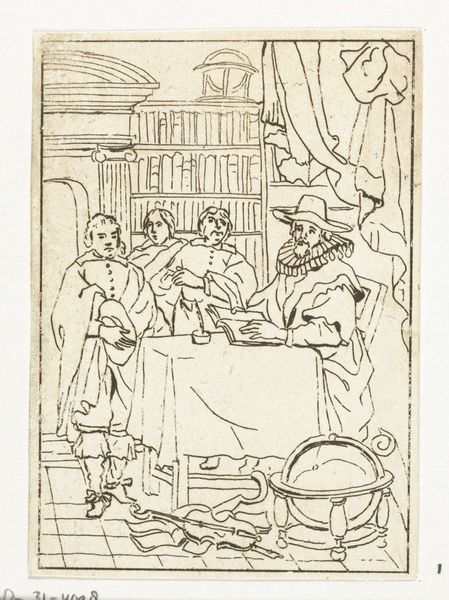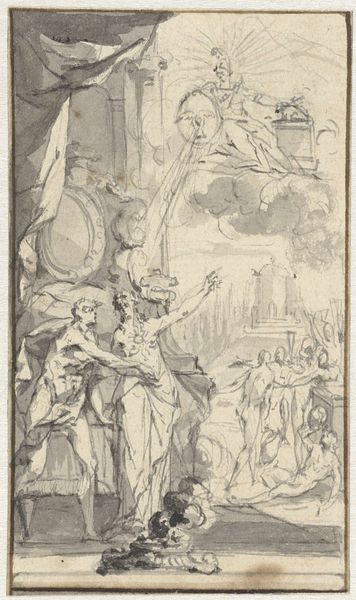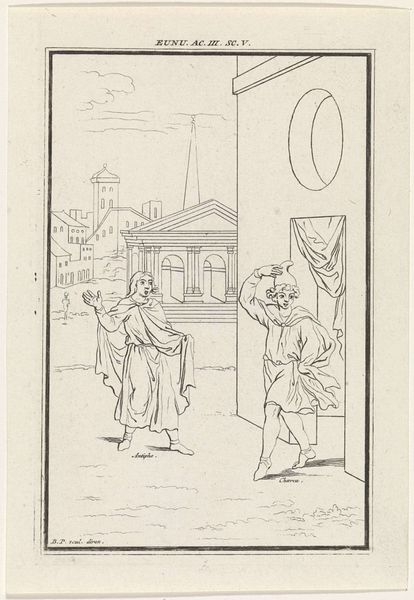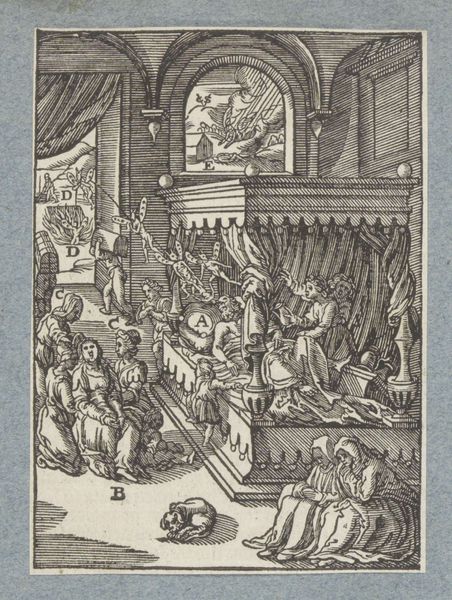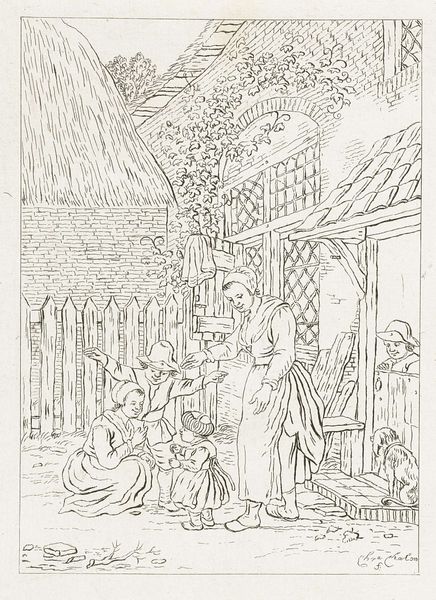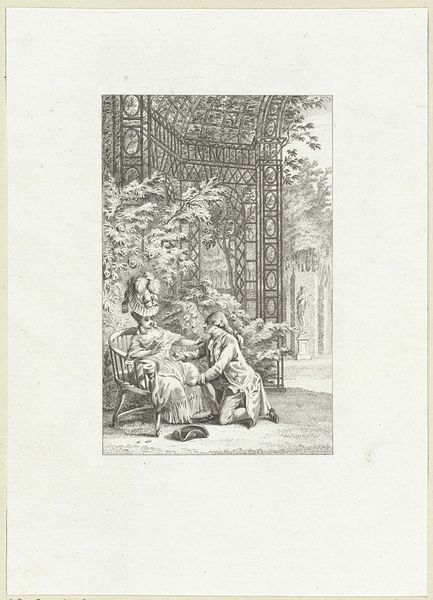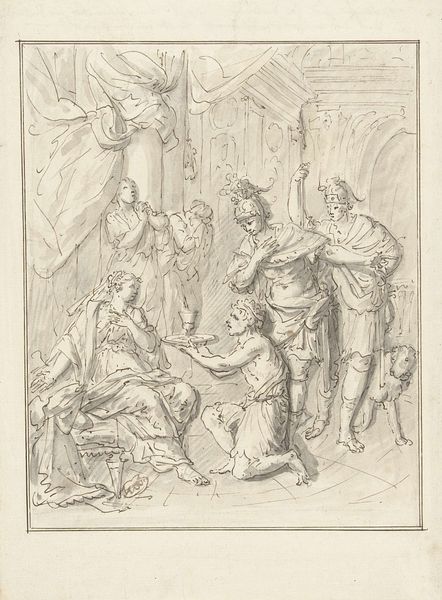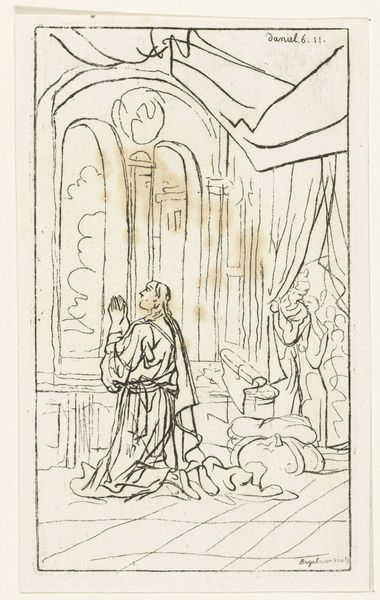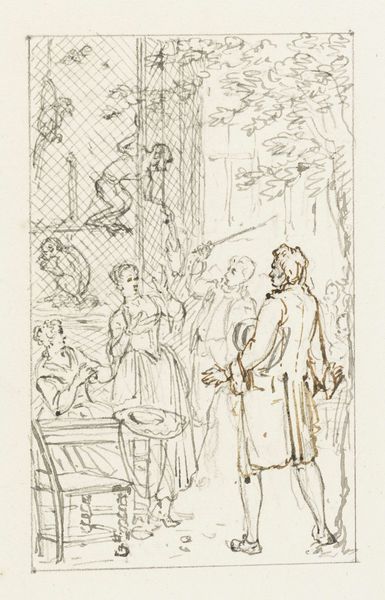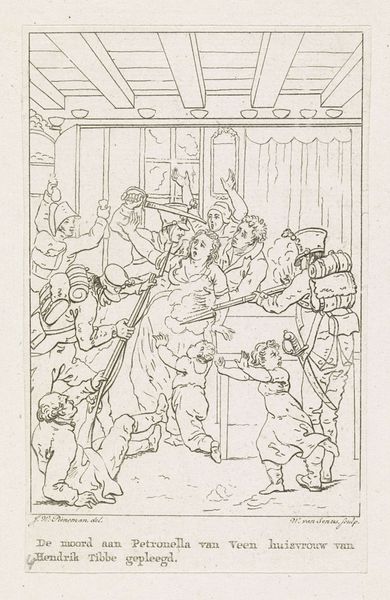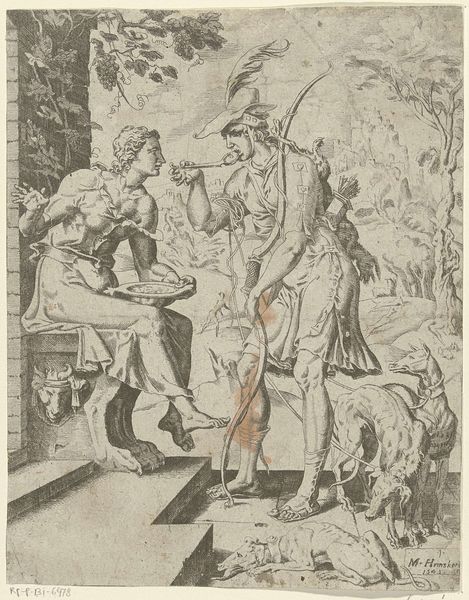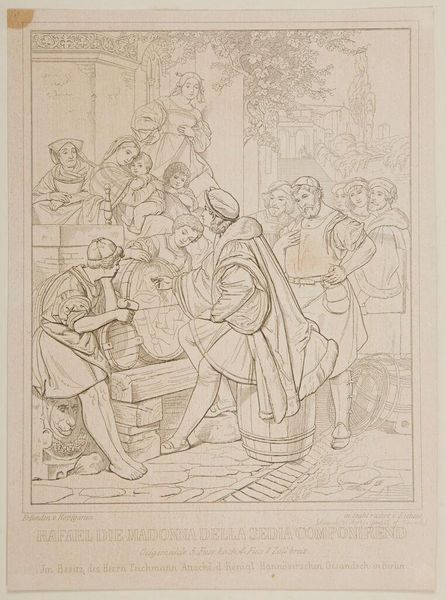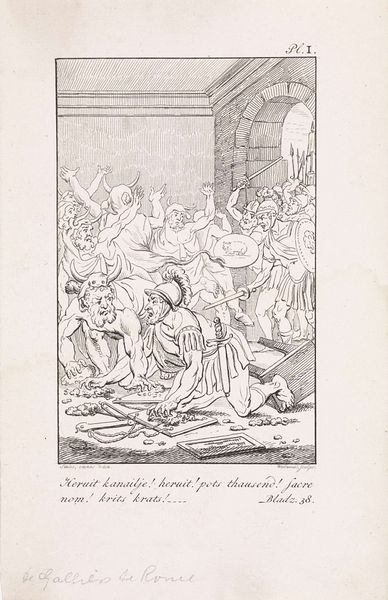
print, engraving
#
baroque
# print
#
classical-realism
#
figuration
#
line
#
history-painting
#
engraving
Dimensions: height 172 mm, width 122 mm
Copyright: Rijks Museum: Open Domain
Editor: Oh, this one's got a really melancholic vibe, doesn't it? Makes you think of faded grandeur and stories whispered through centuries. It feels like watching ghosts rearrange a still life. Curator: Precisely. This is an engraving entitled "Romans around a tomb," made by Bernard Picart between 1683 and 1733. You can find it here at the Rijksmuseum. It provides insight into how eighteenth-century artists grappled with classical antiquity. Editor: "Romans around a tomb" – so apt. I’m struck by the quiet drama of it. The way the figures are arranged... that woman carrying the urn, and the fellow sketching? What’s he hoping to capture, I wonder? The weight of history? Fleeting inspiration? Curator: Consider how Picart engages with themes of memory, ritual, and power within a broader context of archaeological fascination and nascent colonialism. How did interpreting and presenting Roman history play into the self-fashioning of European societies? It raises critical questions about whose stories are privileged and how that shapes our present understanding. Editor: Gosh, makes you wonder about all those stolen urns. Still, isn't there a hopeful side to the story too? Like art has this knack for pulling folks together across time. I'd imagine a hopeful, yet bittersweet, emotion. Curator: Indeed. Picart's choice of line engraving adds a certain formality and clarity, but what about its social implications, in that accessibility means different groups, irrespective of status or education, have access to information about Roman customs and art? How does art mediate complex relationships and differing cultural perspectives, you think? Editor: Hmm...maybe it makes the past relatable. Shows people wrestling with emotions we still understand – loss, reverence, curiosity...though sometimes those “understandings” come with a bunch of cultural baggage. Anyway, thanks, that gives me a new lens for pondering mortality next time. Curator: I hope this exploration helps you engage with a nuanced understanding of historical representations and the ever-evolving dialogue between the past and present.
Comments
No comments
Be the first to comment and join the conversation on the ultimate creative platform.
